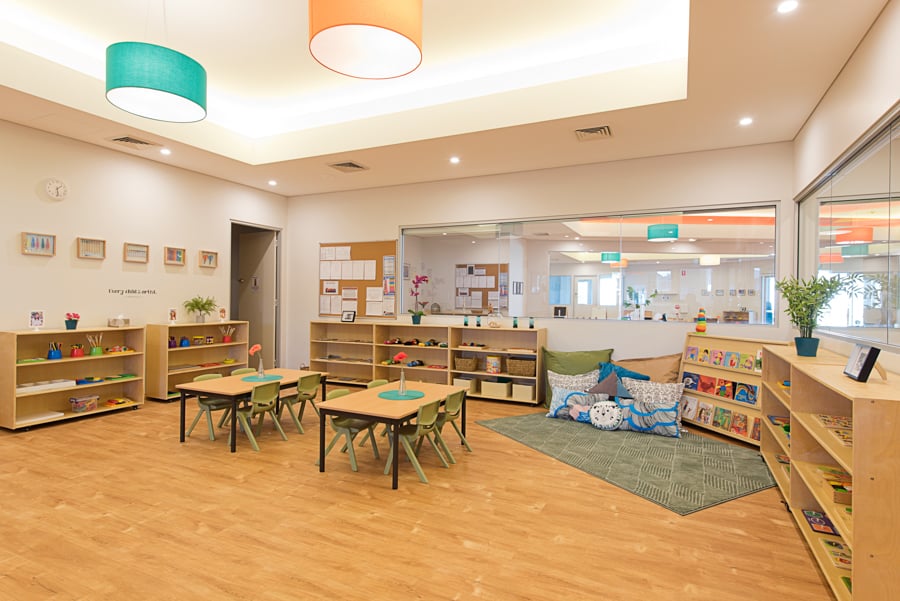
Commonly referred to the ‘prepared environment’, the Montessori classroom is purposely structured to invite interest, encouraging young learners to explore and engage in learning. The result is a natural, beautiful and inviting learning space, that is uncluttered and aesthetically pleasing, being
ready for all activities the day holds.
By working in these purposefully designed classrooms, Montessori children are encouraged to develop independence, foster social skills, and find joy in learning.
Key elements of the Montessori environment
Natural Not Synthetic
When you walk into a Montessori classroom, you’ll find natural lighting, soft colours and uncluttered spaces, which helps both children and adults to feel a sense of safety and belonging.Instead of filling wall-space with coloured learning charts and finding plastic-based toys everywhere, Montessori children work with naturally made wooden learning materials at small wooden tables or woven rugs on the floor.
The walls display framed pictures of famous buildings or paintings, and children’s craft is organised in a gallery style, giving their work an air of importance.
No Focal Point
Unlike the traditional primary school classroom, where desks are usually oriented toward a white-board or learning area, there is no focus point in the Montessori classroom. Instead, the entire classroom acts as an engaging learning space, where children can work individually or collaboratively on educational projects.The teacher acts as an extension of this environment, not the focus of it, as they guide children by aiding during particularly challenging learning situations. Children develop independence and essential communication skills as they actively participate in their education, promoting concentration and deep learning.
Accessible Learning Materials
Children can not be expected to build skills if they are not given the opportunity to do so. That’s why you’ll find everything from craft materials, morning and afternoon tea crockery, and the hand-washing sink to be specifically sized, and accessible at all times in the Montessori classroom.By having direct access to the day’s materials, the students to enjoy freedom within limits, as they choose their learning activities and work with
them with limited teacher interaction.